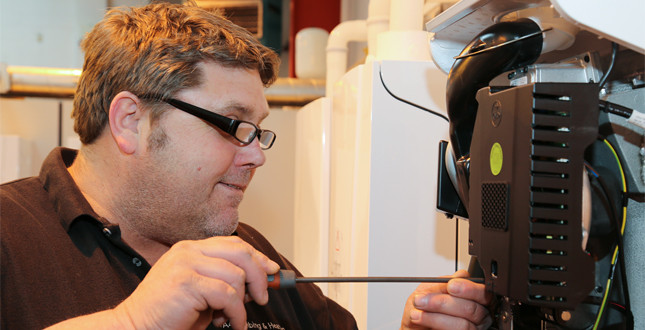

For heating engineers, it’s vital to be able to successfully identify a non-genuine boiler part. David Willetts offers his top tips for spotting a fake part.
The heat exchanger
There are several aspects to a genuine heat exchanger. First are the hydraulic fixings – are they properly welded? Have the connections and fixings been correctly specified? If the answer to any of these is no, then you’re looking at a counterfeit.
The problem with these poorly welded fixings is that they could easily break when put under too much tension, and incorrect connections and fixings could lead to leaks which would in turn cause damage to the boiler or homeowner’s property.
It’s equally important to check that the heat exchanger has separate compartments for potable hot water and system feed water which are sealed firmly and correctly. If not, the domestic side of the heat exchanger could become contaminated, resulting in a potentially serious health and safety issue.
It may sound obvious, but the simplest way to guarantee the legitimacy of a heat exchanger is to check that the manufacturer’s details, date and batch number are embossed on the component. This guarantees that it is traceable in the case of a fault and can be claimed under warranty.
The PCB
To determine if a PCB is a genuine part, a careful examination will reveal if it meets the relevant requirements.
For instance, scorch marks or a damaged ‘warranty void’ sticker are major warning signs. A scorched board is indicative of poor workmanship which could lead to overheating and eventual failure, and if the sticker has been tampered with, the component should not be installed.
Components must be working individually, as bridged components may cause short circuits, ultimately damaging the board and other aspects of the product.
Soldering should also be top quality, because if it isn’t, the component may fall apart during transit and cause the board to fail, possibly harming other parts in the process.
The fan
There are multiple tell-tale signs which could indicate a non-genuine fan assembly, many of which can be judged by eye.
First off, there should be a thermal cut-out on the motor, as well as dedicated earthing points. If either of these are missing, then the product is a fake and could cause serious problems. A lack of thermal cut-out means the motor could severely overheat, shortening the life of the product and in a worst-case scenario, resulting in a fire. Likewise, if you can’t find where to earth the fan assembly, the casing could become live and therefore dangerous.
Another easy way to determine if the product is legitimate is to assess the rotor motion. A quality fan assembly should run smoothly, whereas refurbished fans can be unbalanced and noisy and are far more likely to fail quicker.
The only way to guarantee a reliable, high quality part is to buy an approved component from the relevant boiler manufacturer. Not doing so can have legal repercussions for the installer, invalidate the homeowner’s boiler warranty and create serious health and safety risks.
David Willets is General Manager at Baxi Genuine Parts
If you'd like to keep up-to-date with the latest developments in the heating and plumbing industry, why not subscribe to our weekly newsletters? Just click the button below and you can ensure all the latest industry news and new product information lands in your inbox every week.